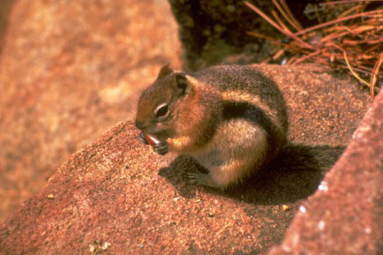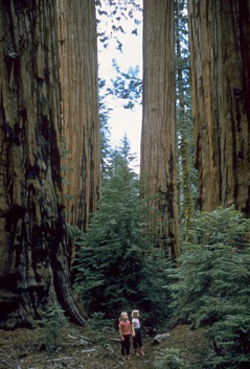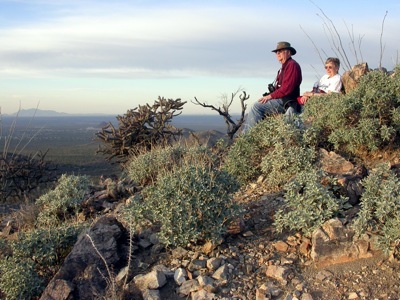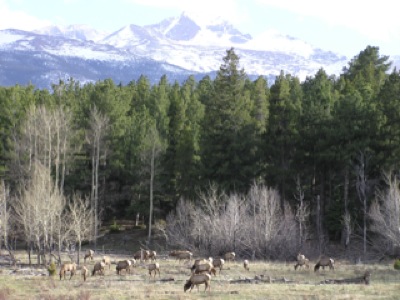
Wildfires pose threat to parks each year
The national parks of our nation are vast and beautiful and open for anyone to visit.
Many visitors travel to these hotspots of nature’s glory to experience a place where the land is not disturbed by the innovations of mankind. The parks are centered on witnessing nature in its purest form. But even nature has ways of erasing the land it has created.
Wildfires are one of the biggest problems. They are common natural events among national parks and they pose threats to people, structures and animals alike.
 |
This small chipmunk can survive a forest fire, but its home will be ravaged and burned down (Photos courtesy of the National Park Service). |
According to the U.S. Fire Administration, there were 78,792 fires that burned 5,921,786 acres across the country in 2009.
In a recently released article in Wildfire Today, the National Interagency Coordination Center released statistics that in 2010, there were 71,971 fires, with 3,422,724 acres burned in the process.
In the same article, it stated that “a total of 788 structures were destroyed by wildland fires, including 338 residences, 445 outbuildings and five businesses.”
With so much of nature being scorched from the earth, actions have been taken to hinder rising wildfire levels. Government agencies, park services, and citizens have all implemented fire policies, strategies, and evacuation plans to counter the wildfires.Wildfires can start from the smallest of flames, including a spark from a man-made fire. According to the brochure from the National Park Service, “Around the world, 90 percent of all fires are started by people.”
Ron Steffens, an associate professor of communications at Green Mountain College and an investigator of wildfires, believes that most of the wildfires created by man are unintended.
“The majority are accidental fires, whether campfires or working in the woods with chainsaws. Sparks from the sawing can spark a fire easily,” he said.
Deb Schweizer, a fire education specialist at Sequoia & Kings Canyon National Parks in California, stated that forces that are not human also ignite fires.
| At right, these tall redwood trees may seem massive and indestructible, but they are very dry and susceptible to fires. Next below, drylands like these are familiar with fires. However with fewer fuels they don’t burn as intense as a massive forest. Last below, these woods are currently recovering from a wildfire, but the local populace is still thriving. |  |
“Naturally it’s going to be lightning. It also needs to be dry and have the right amount of fuels. Slope comes into factor as well. Simply put, it can all start from a single tree,” she said.
There are other fires that are intentionally started to control crops and forestry, but these also lead to forest fires.
“Farming causes fires because they are trying to control their crops, they let them get out of control and they turn into wildfires,” Steffens commented.
Animals are also in the path of wildfires. But according to Schweizer, they are quite adept at avoiding fires.
“As a rule, animals will get out of the way. They just move out, chipmunks go underground, birds fly away. Deer and bears hang on the outskirts and monitor the fire,” she commented.
 Some animals even take advantage of wildfires, Schweizer added.
Some animals even take advantage of wildfires, Schweizer added.
“Some animals, such as foxes or wolves, hunt on the edge of the fire to get the animals that were smoked out,” Schweizer explained.
Even as the ecosystem seems to be adapted to these situations, park rangers and government agencies have issued numerous outlines, policies and evacuations to ensure safety for visiting tourists.
The National Park Service’s official wildland fire management policy deals with protecting the environment, but more importantly protects human lives.
“Wildland fires are managed under a sophisticated organization that looks at each fire’s conditions individually when deciding how to respond. While firefighter and public safety are always the top priority, the ecological effects and benefits are also important considerations, especially in wilderness areas,” the park service policy states.
It continues: “The right response may mean anything from monitoring a fire that is helping the landscape to aggressively suppressing a wildfire that threatens people, homes or important resources.”
Mike Lewelling, fire management officer at Rocky Mountain National Park in Colorado, explains the policy in his three-bullet model.
“Providing for the safety of the staff and the public. Once we can protect ourselves, we look to protecting the community and park assets. We want to restore and maintain fire-adapted ecosystem,” he said.
Evacuation plans are also being formatted. At Yosemite National Park in California, there is a plan that covers any possible scenario presented by fires. It describes in detail what families should pack in case of evacuation.
 Items included are “three changes of clothes and a change of shoes, a three day supply of food and water, important family documents, etc…”
Items included are “three changes of clothes and a change of shoes, a three day supply of food and water, important family documents, etc…”
The plan also details the actual exiting of the park during a fierce wildfire, saying, “Residents will be advised to leave the area immediately via the designated traffic control points for North and South Wawona.”
All signs seem to point to a brighter tomorrow, but Schweizer doesn’t seem too optimistic.
“We’re really boxed in because of global warming. Fires are going to get bigger, hotter, and more uncontrollable,” she said.
Schweizer continued: “You throw in global warming, invasive species and more fuels and you’ve got a real problem on your hands. And more people are coming in so there are people to protect.”
“You’re getting new fires, ones that animals can’t run away from and ones you can’t outrun yourself. The Cedar Fire of 2003 burned at a football field per second,” she said.
It will take time to see if the policies and evacuation implemented will be effective, but to reassure people concerned about fires, the National Park Service’s brochure on wildfires states as follows:
“As our understanding of fire increases we will be better able to live with fire, which is an integral part of our world.”

Comments are Closed